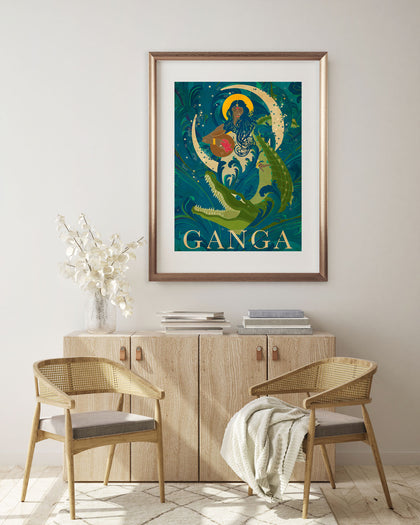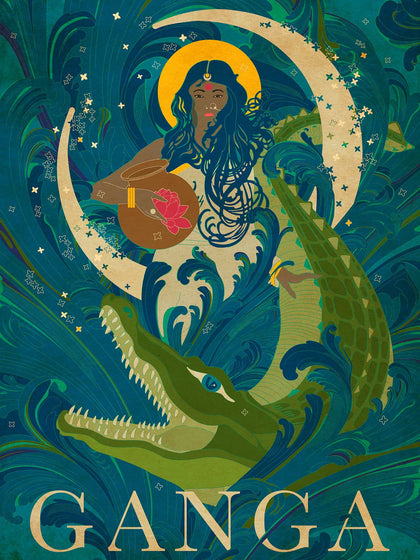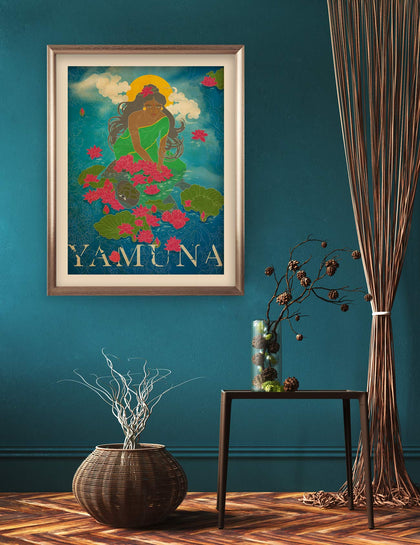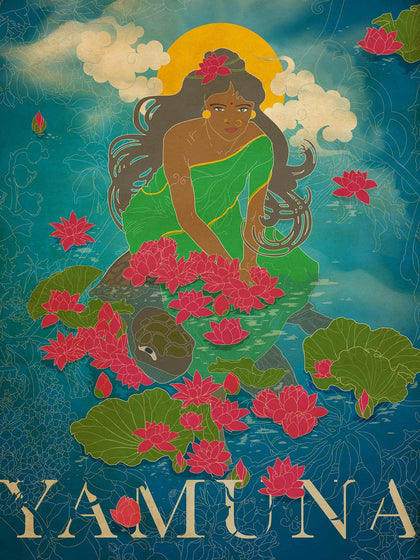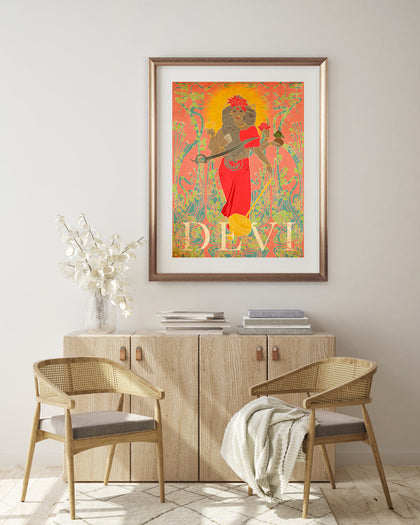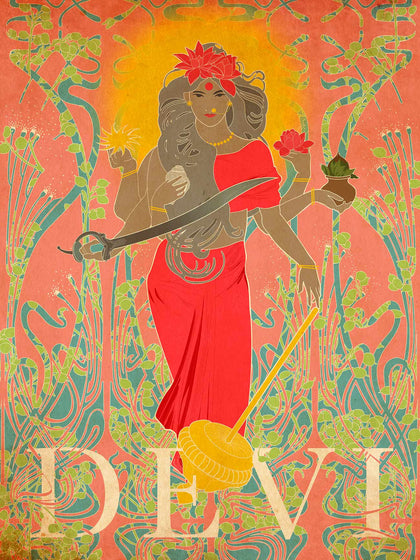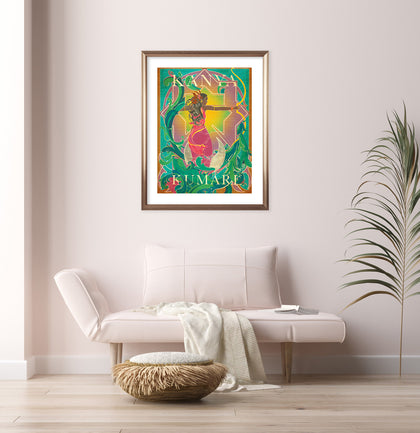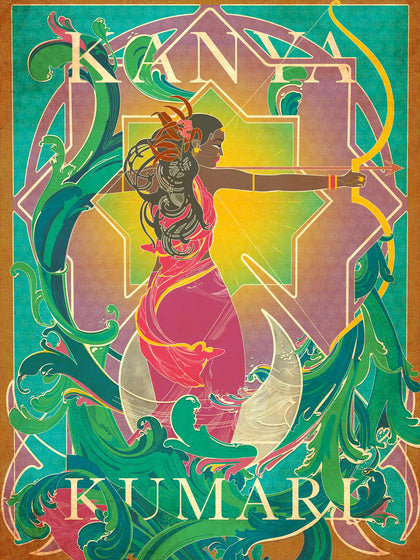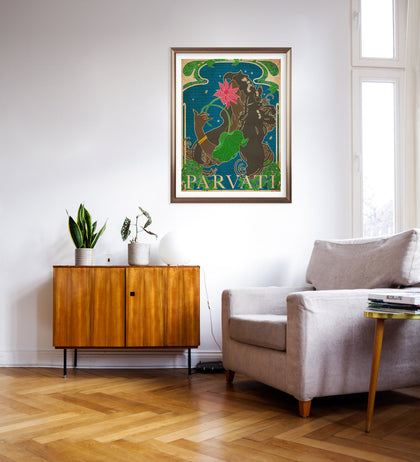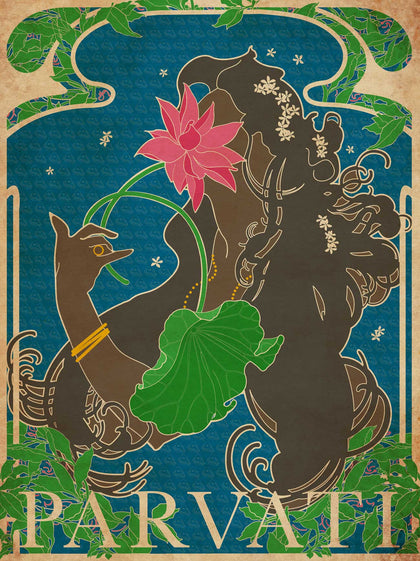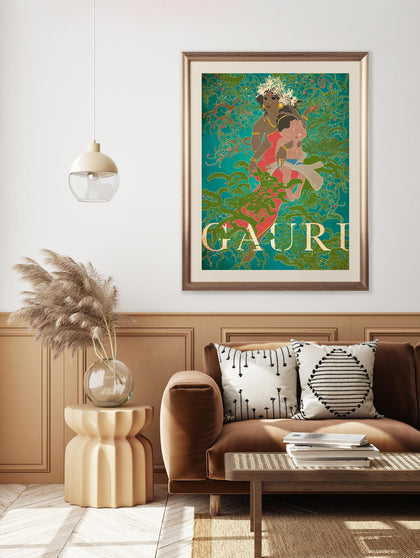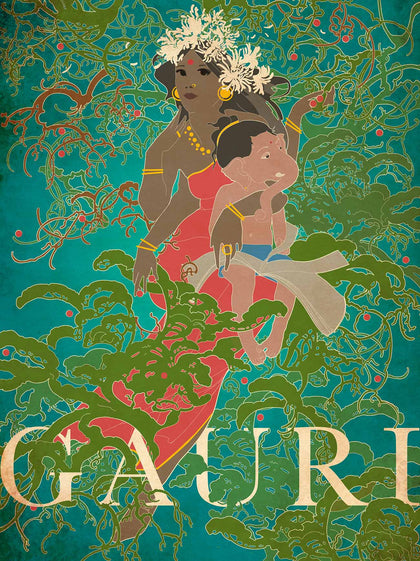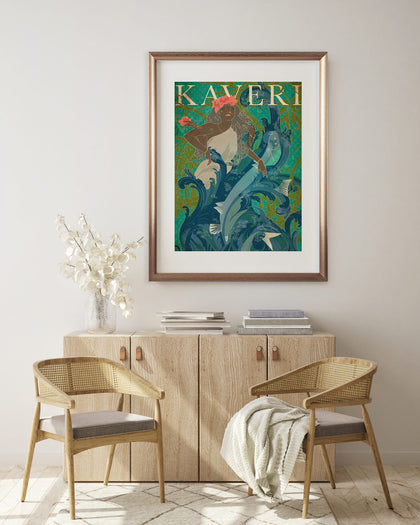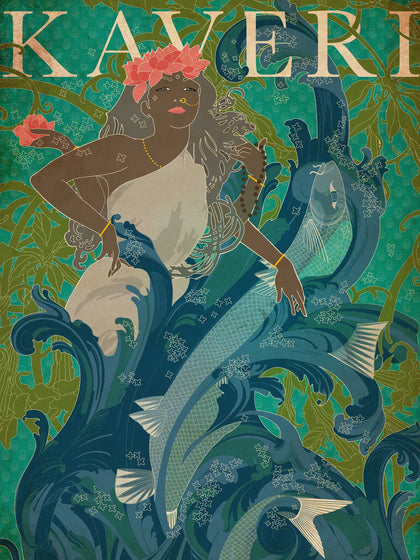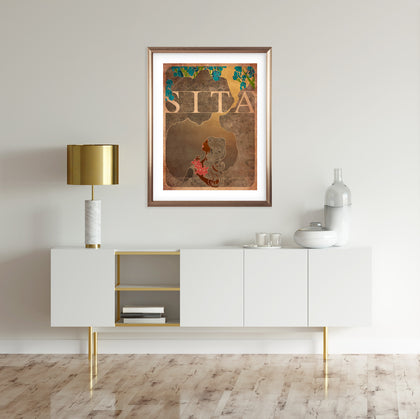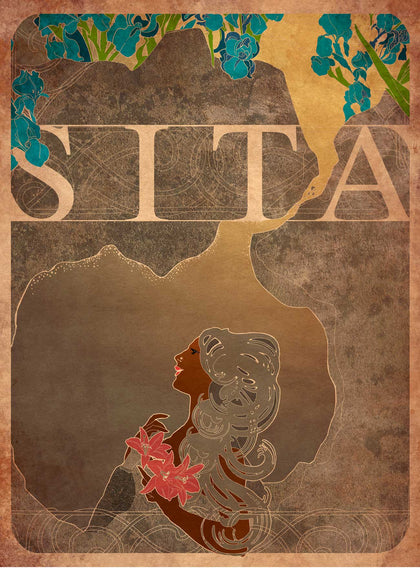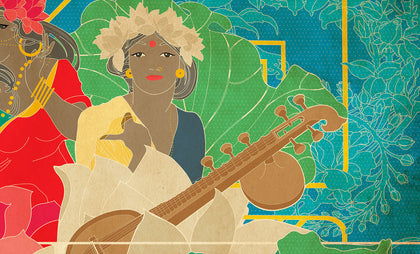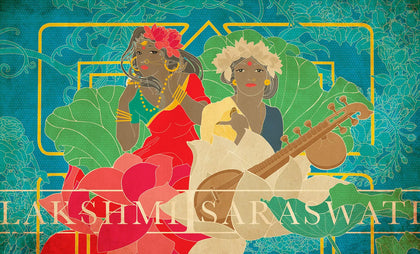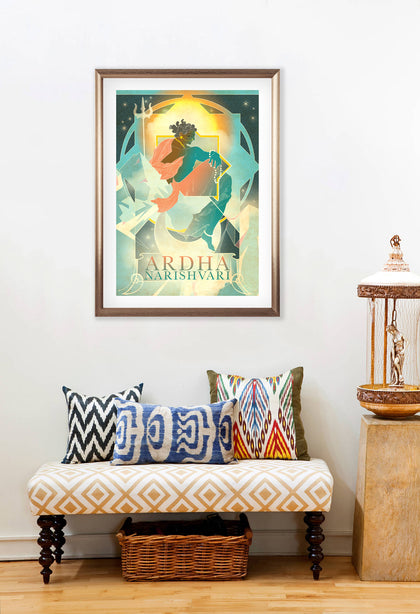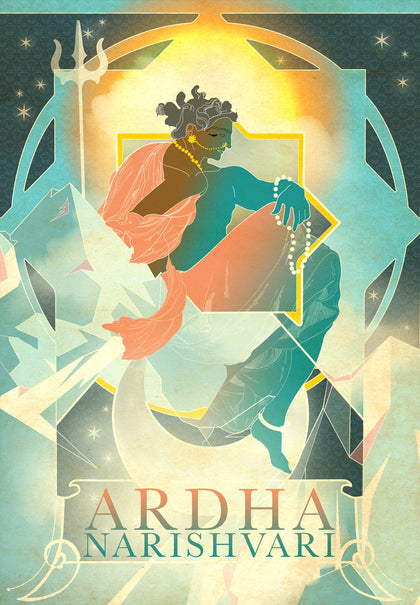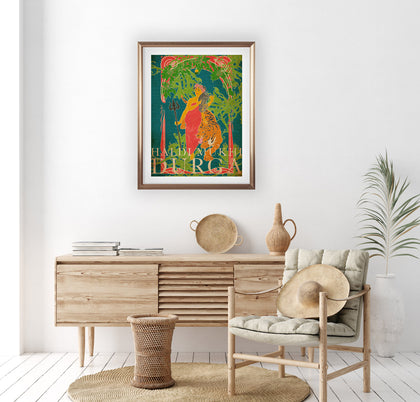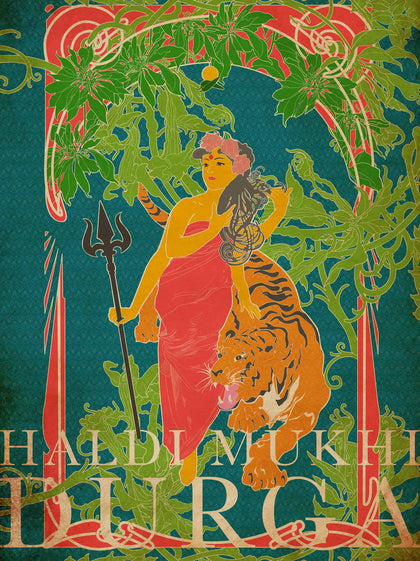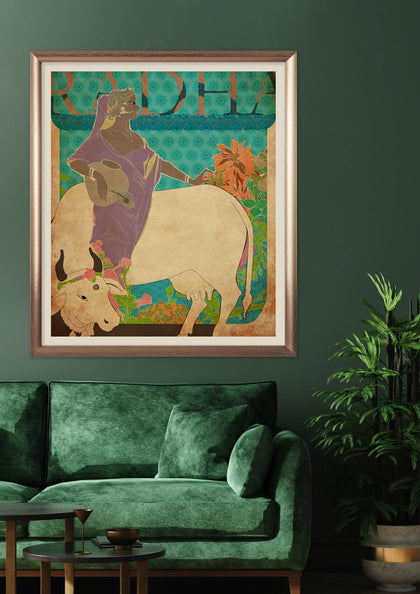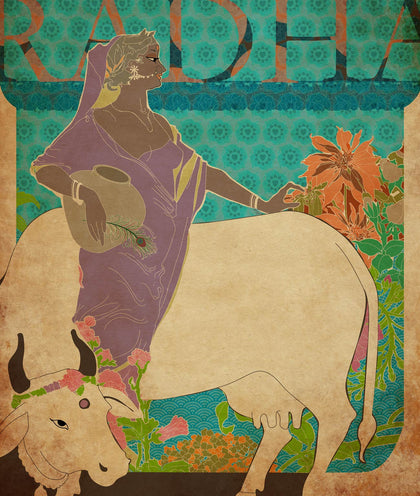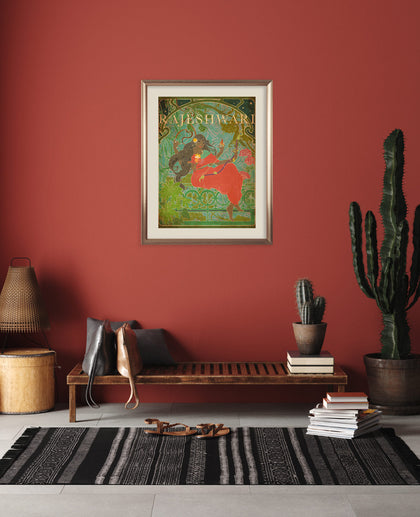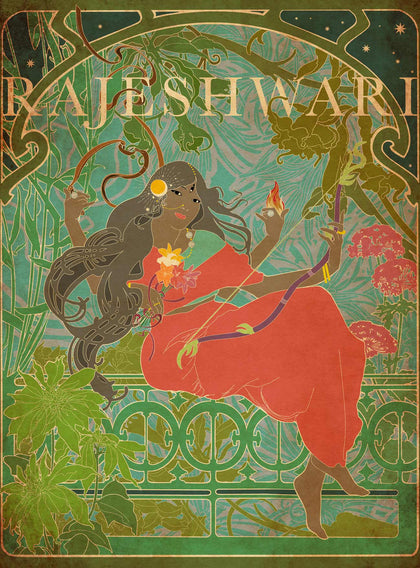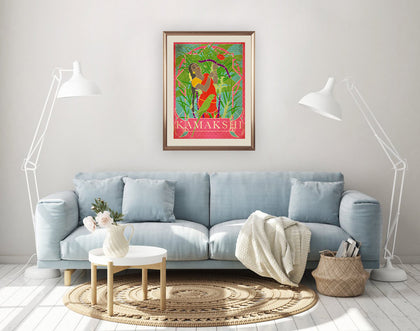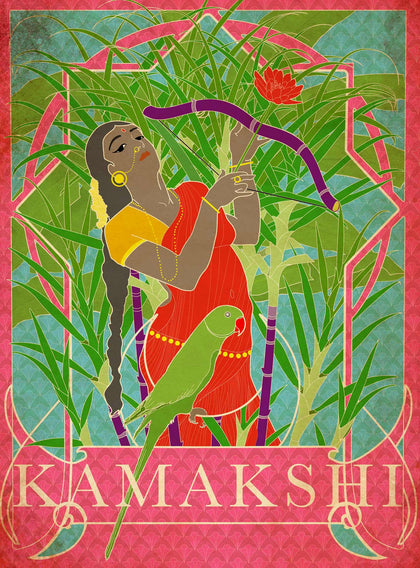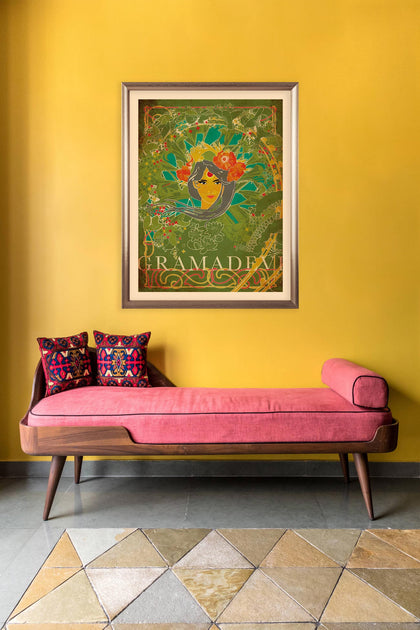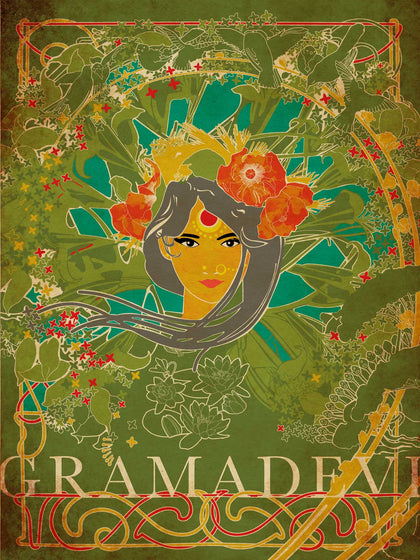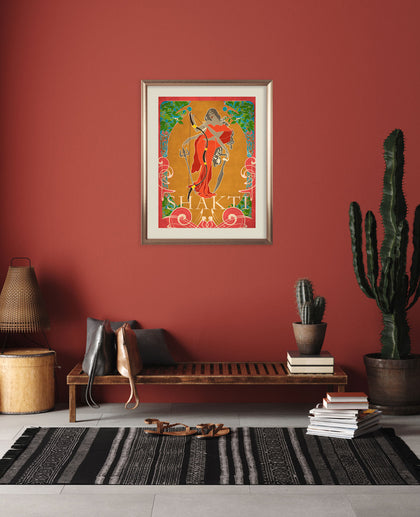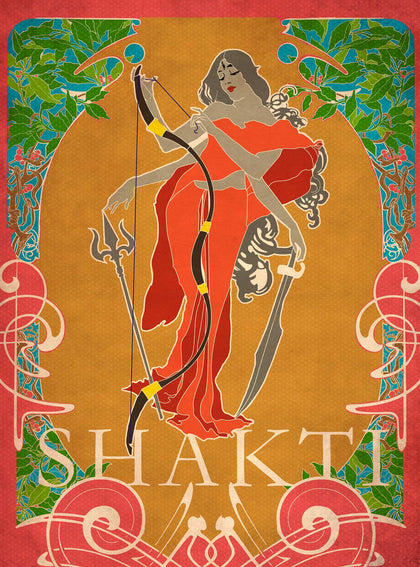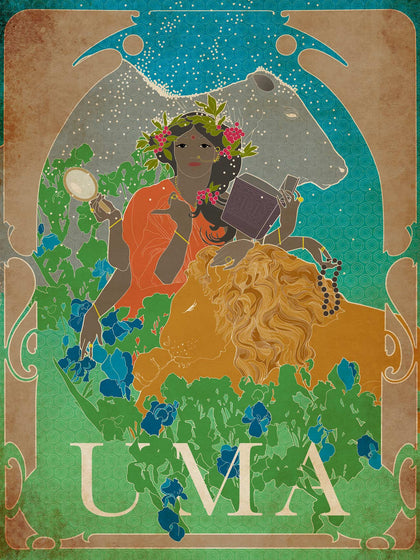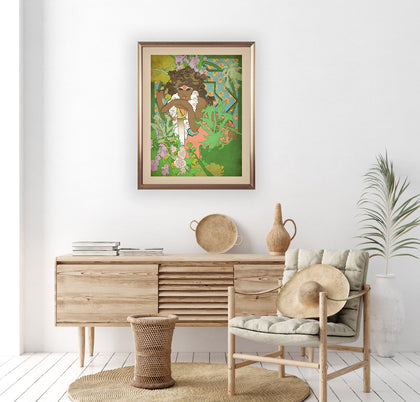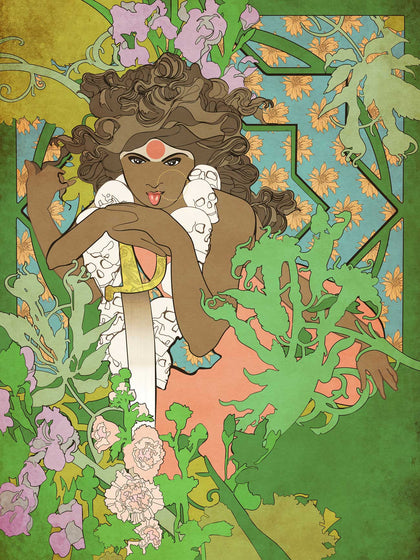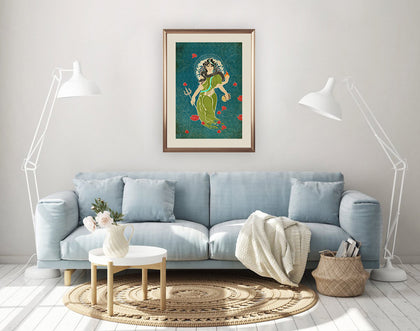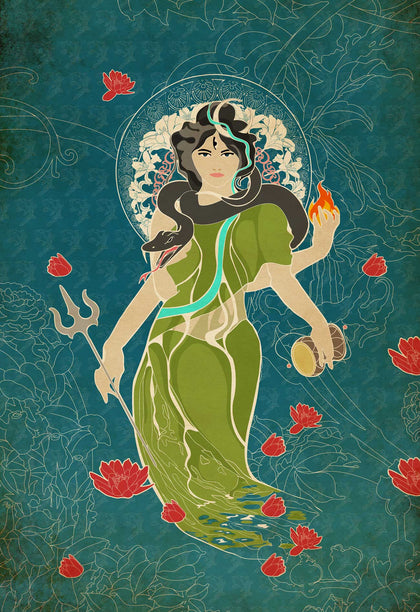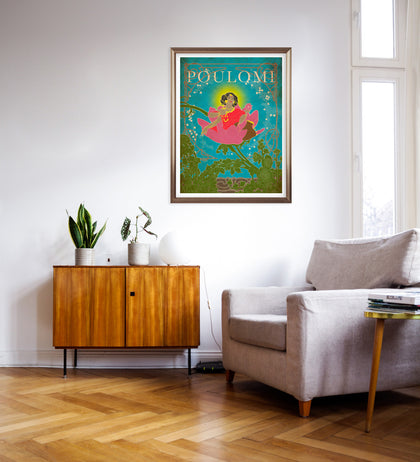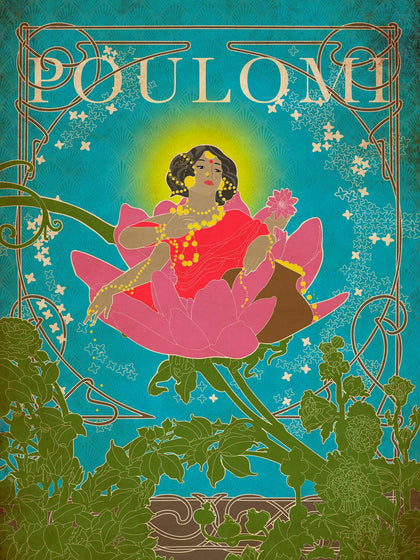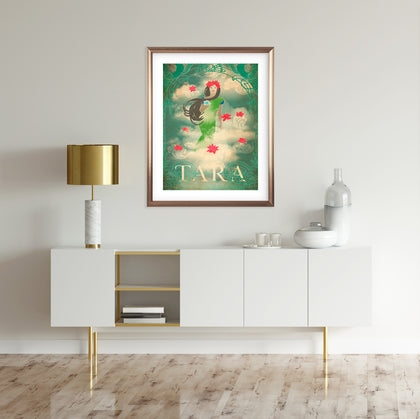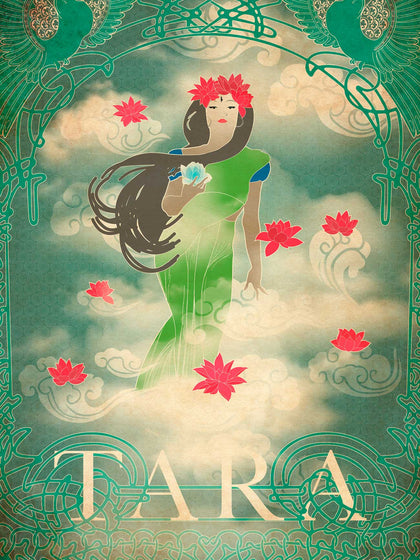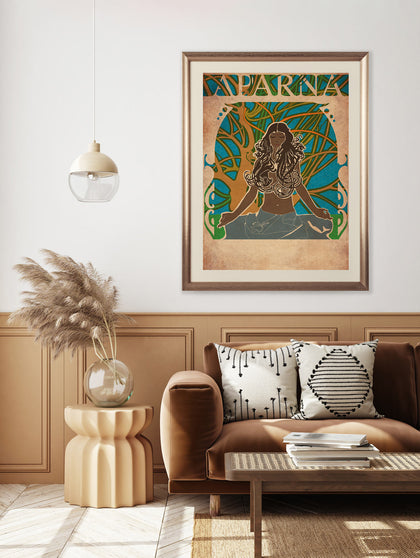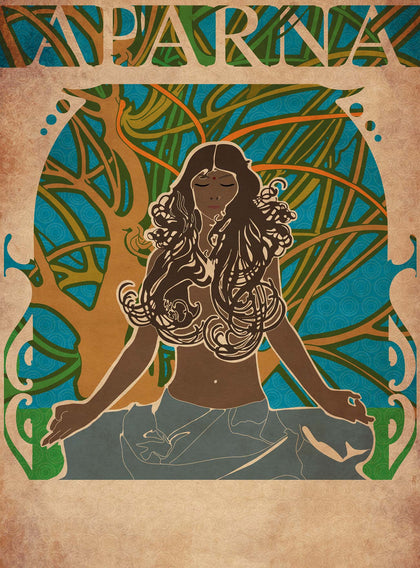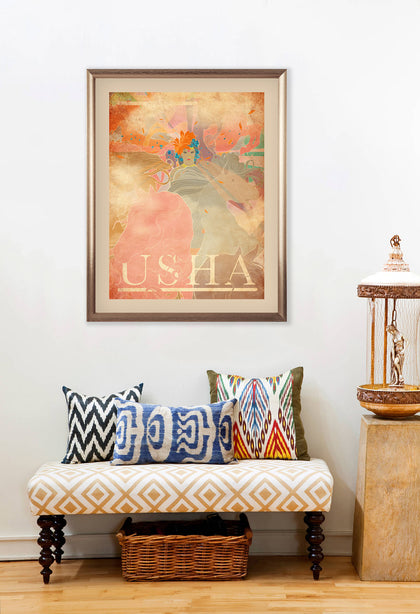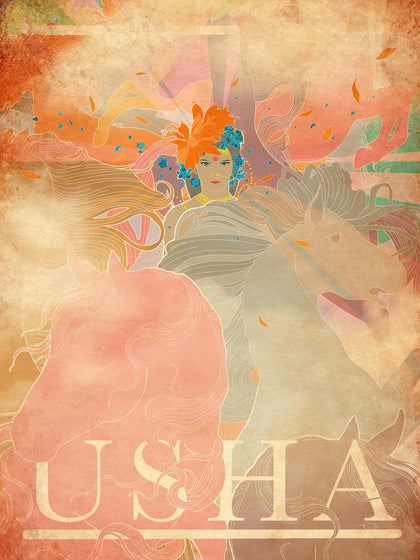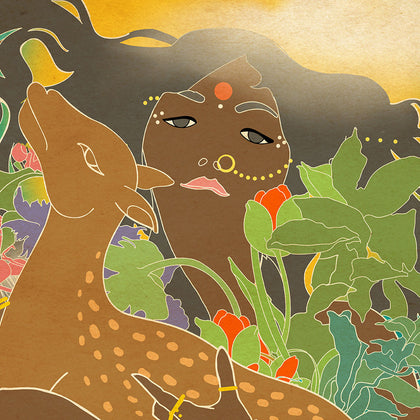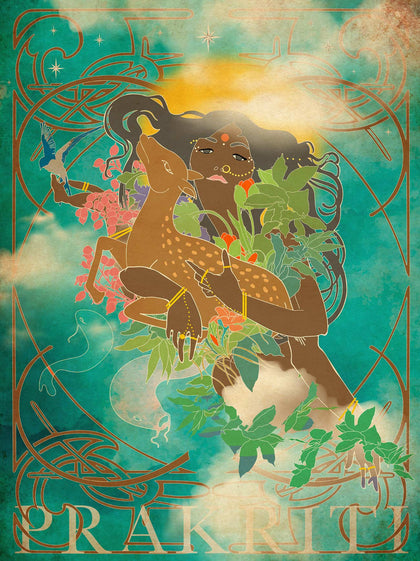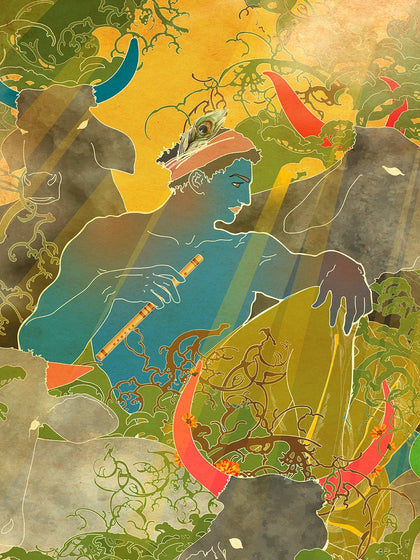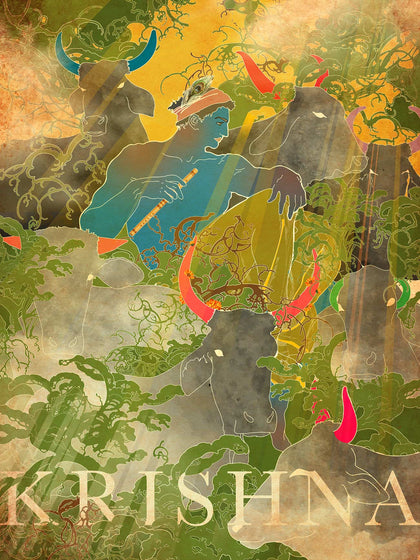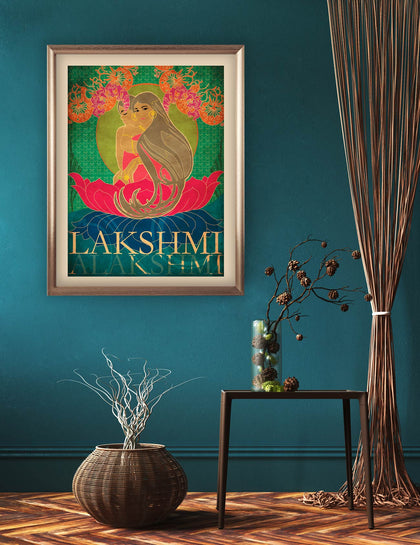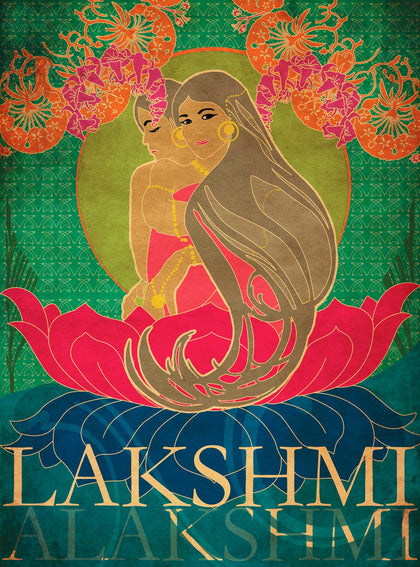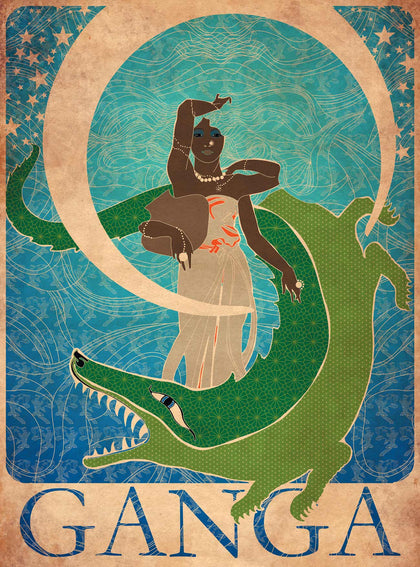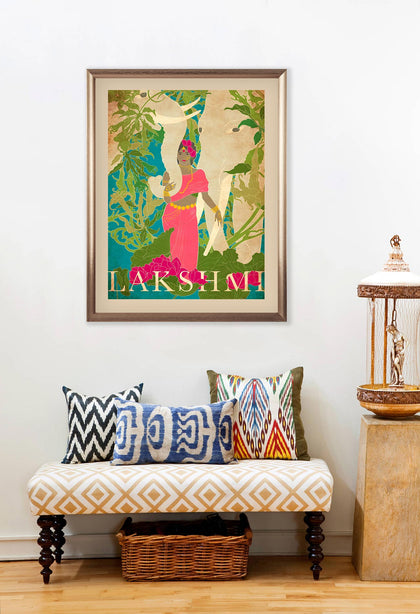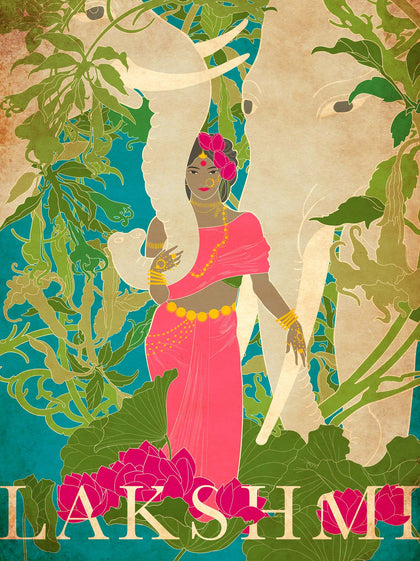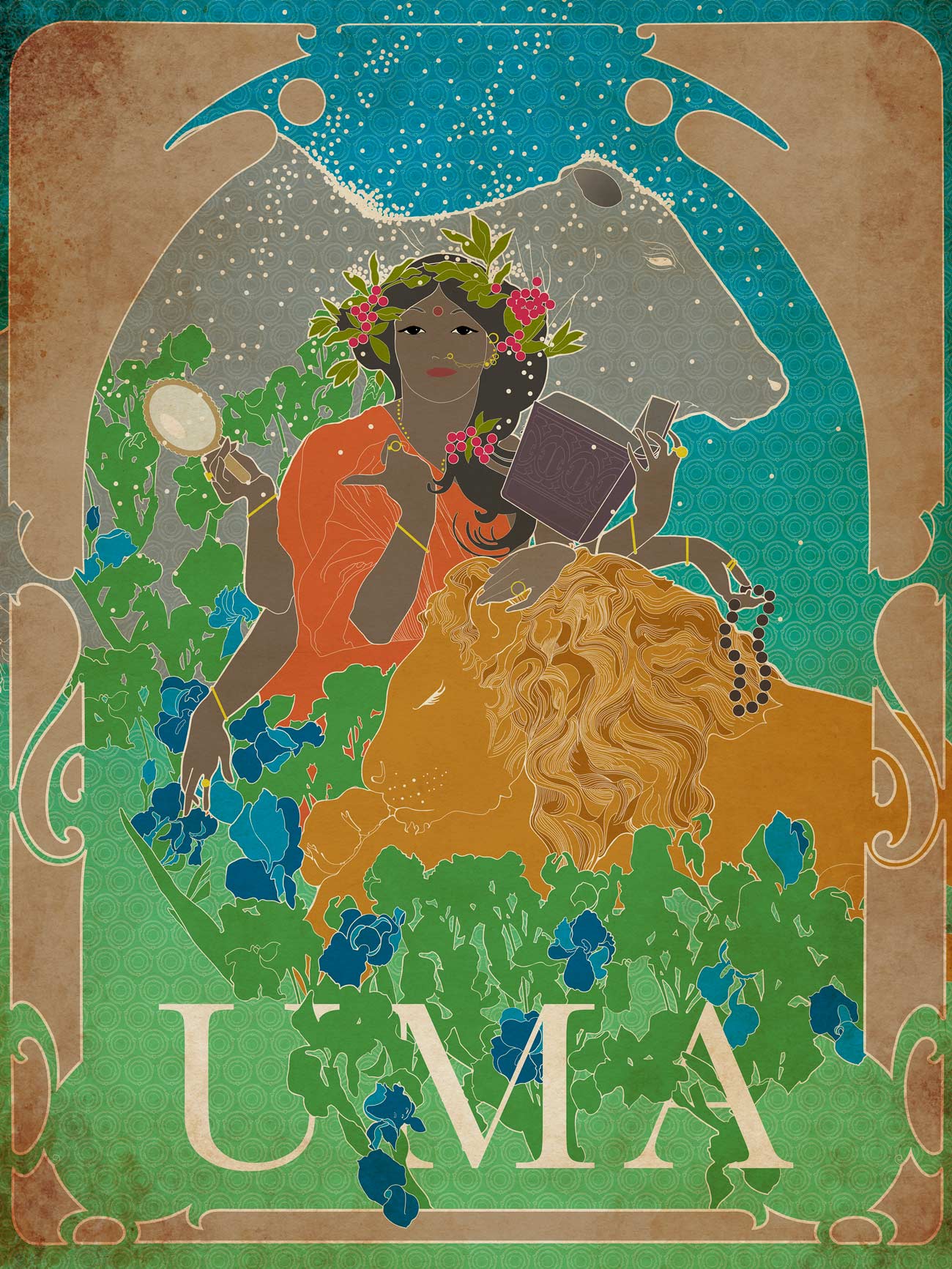Description
A goddess with many names and many lives - Parvati, Gauri, Shakti - but it’s Uma who holds the mirror, changing how we view ourselves and the universe we live in. She is the creator of a new world order, where culture is born out of empathy. A distinctly feminine vision, in which our spirit is found in her matter, our soul in her substance. Even as we observe, we realize that she is the observation. While awkwardly, we tussle with values, constantly making and breaking them, she is a natural phenomenon.
Uma brings an air of expectancy, a preparation for a family as she arrives at her husband’s icy cave in the mountains. The hermit god Shiva has known nothing else. They make love for a thousand years, thinking of nothing but pleasure as she thaws the walls of his glacier and releases Shiva’s tapasya into the world - rivers into the plains and life into the dry soil. Their home on the impossible peaks of Kailash, her presence warming its core, for she is also a daughter of the mountains. Their children will be either hers or his, and not the fruit of their union, but that is another story. A love beyond the narrow understanding of procreation and family. As Kali she had danced on Shiva’s chest, but as Uma she sits beside him and on him when they make love. Ice and fire giving way to life, and a unique shared vision of all creation.
About the Series:
This artwork is part of the “Sister Misfortune” series, through which the artist, Smruthi Gargi Eswar, narrates lesser-known stories from Indian mythology, while reflecting on the narrative surrounding women in our culture. Various Indian goddesses (devis) are depicted with a refreshing artistic lens.
In India, there is a constant burden on women to be “Devi-like”. Through this series, the artist attempts a reverse deification of the goddesses, making them appear like real women, in a real world. The series is an exploration not just of duality, but of multiplicity. It compels us to question our attitudes - women towards themselves, men towards women. How does the idea of a goddess coexist within every woman? How do we, as a society, so casually dismiss, disrespect, disregard, and defile in our everyday existence, those who we have bedecked with gold and enshrined in a temple?



















































































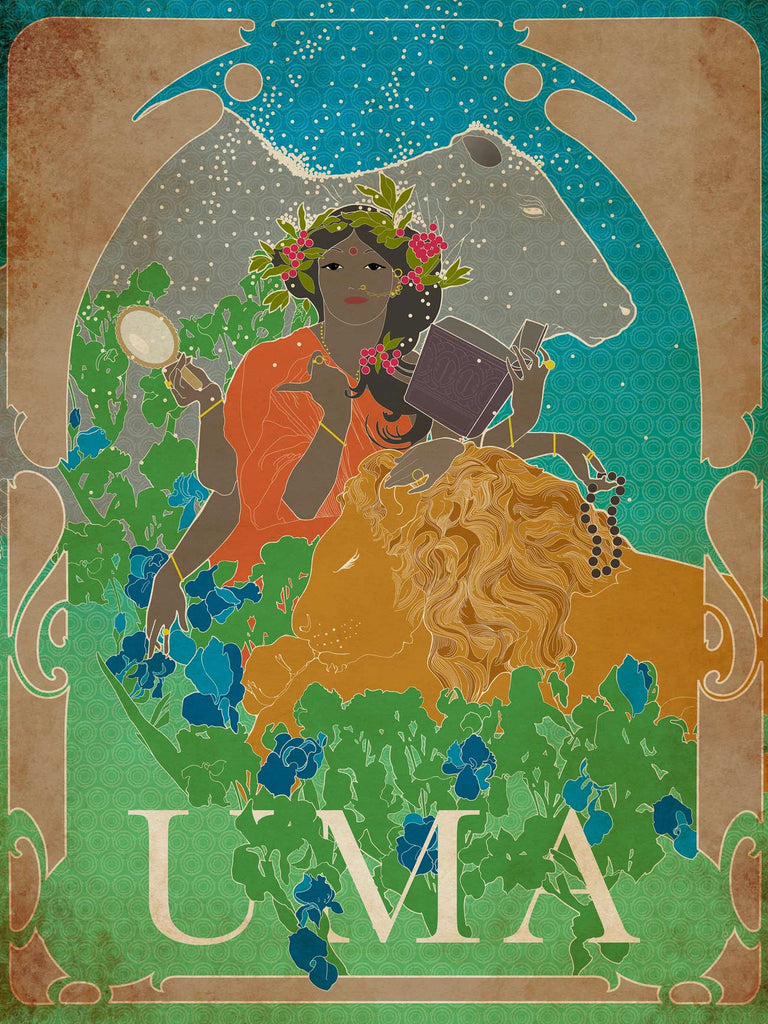
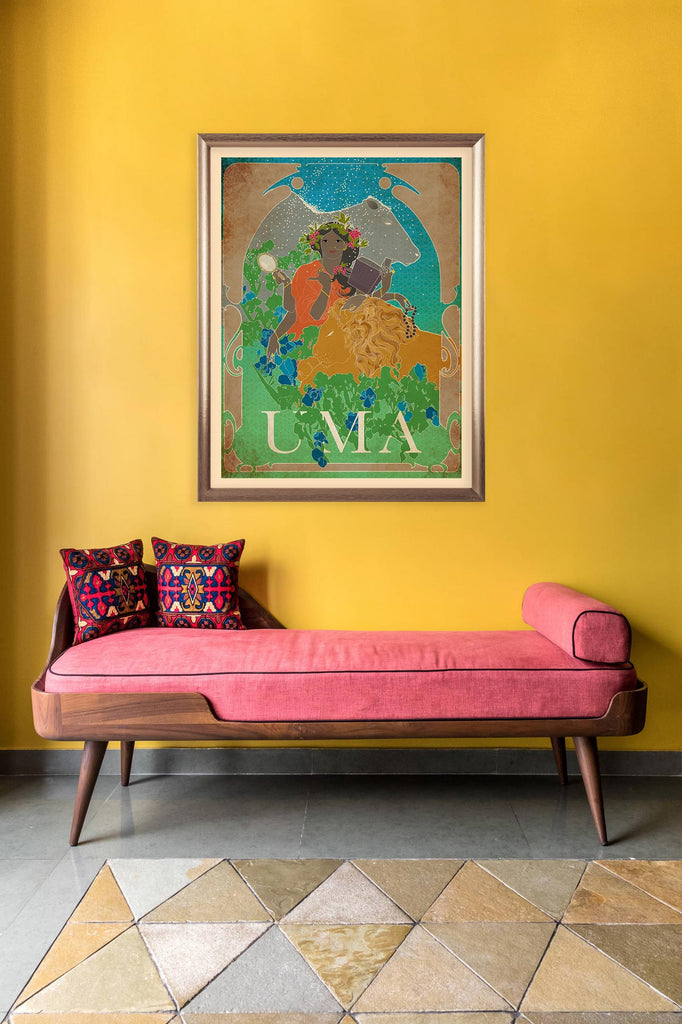
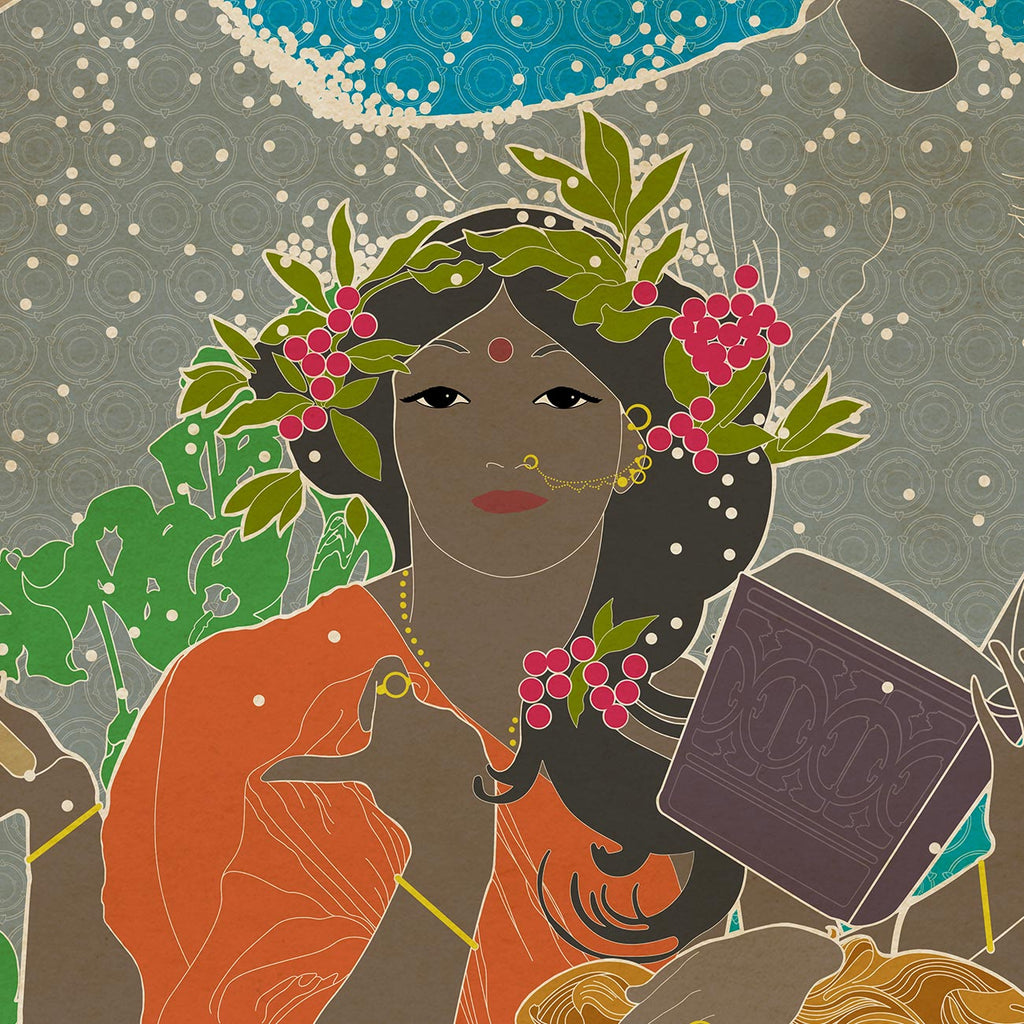
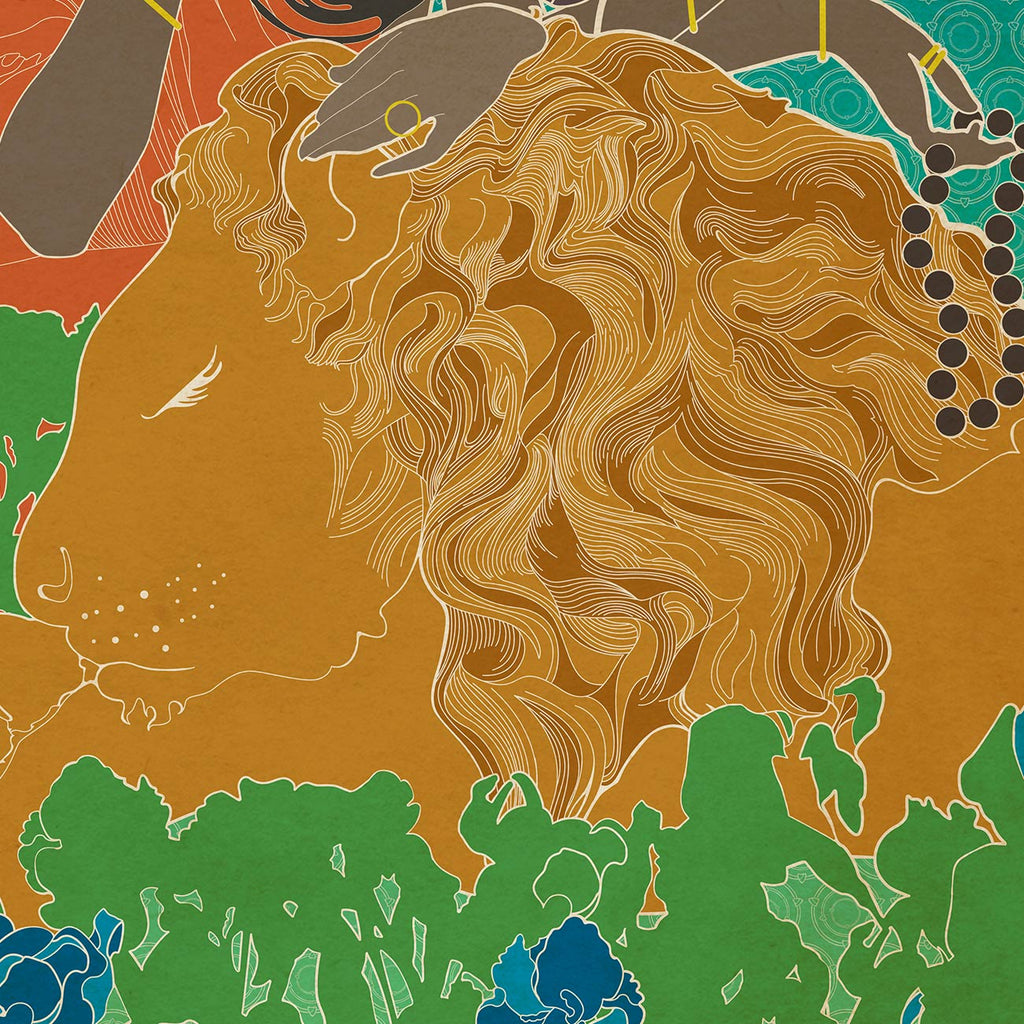
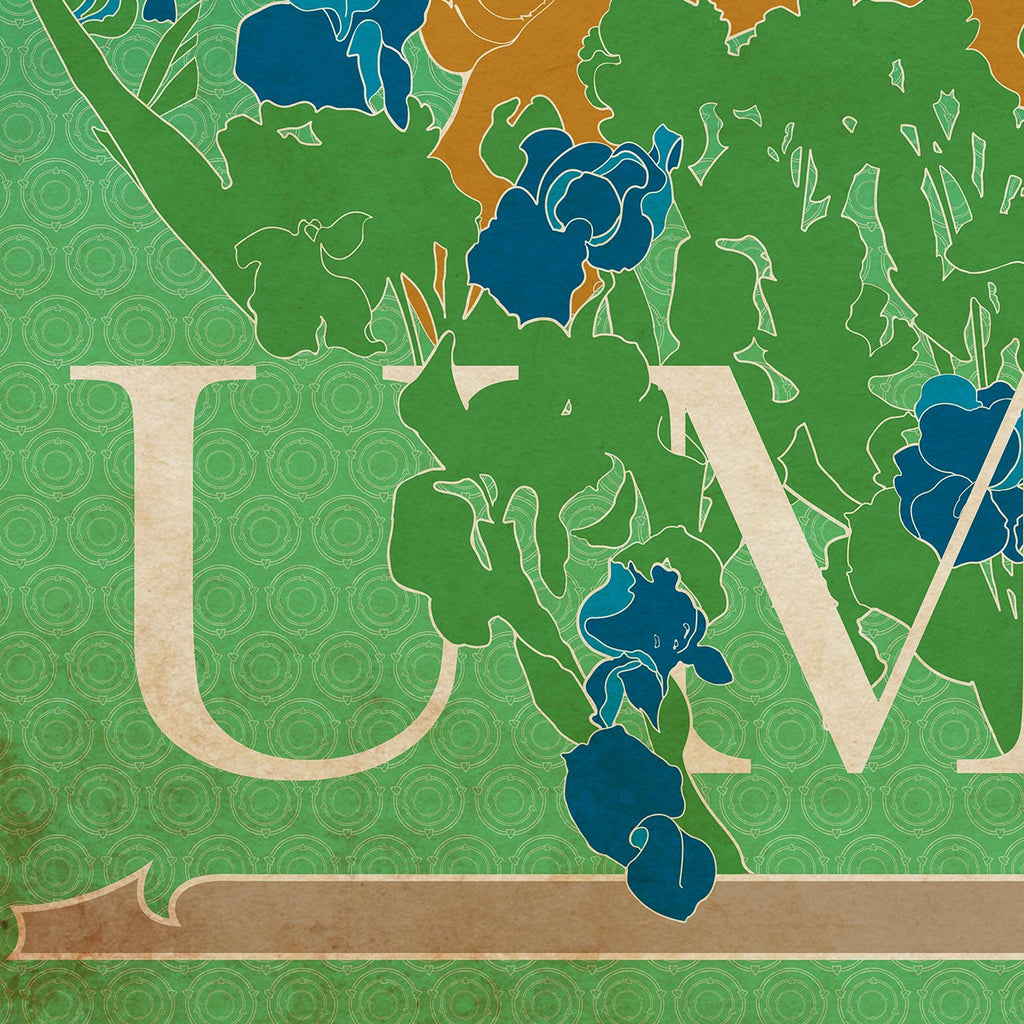
 View Full Screen
View Full Screen


